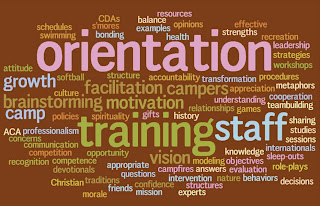In a nutshell, Chip and Dan Heath say that an idea is memorable if it is Simple, Unexpected, Concrete, Credible, Emotional, and told with a good Story. The authors admit that the resulting acronym SUCCES is a bit corny, but memorable nonetheless. As teachers, we need to build our lessons upon these six basic criteria.
But rather than discuss these critical traits individually, let me provide an example that utilizes them all.
The
Charles Atlas bobybuilding ads which first appeared in the backs of pulp comic magazines sold millions of Atlas products. Why? Because they promised to turn a zero into a hero. And more importantly, they were incredibly memorable and persuasive.
First and foremost, the ads were simple. In most versions, half of the page features the tale of the 97 pound weakling who becomes a man, told in comic book format. Charles Atlas and collaborator Charles Roman knew that their young readers would immediately connect with the hybrid language of the comic strip. On top of that, the ad promised these miraculous results in just 15 minutes a day!
The
unexpectedness of the 97 pound weakling's defeat of his nemesis is not unexpected at all, if one is familiar with Joseph Campbell's
Hero Myth. But for our pimple faced comic collector, the mere daydream of such an act would be enough to funnel precious dimes and quarters into an envelope in hopes of a similar triumph over foes (real and imaginary).
How do we know Atlas can help us? Well, just look at him! The results are incredibly concrete and his claims, by every measure, are credible. He doesn't seem to even want our money, because he's offering the book for FREE!
And the
story, of course, appears in those simply drawn frames. (As a reader of the comics, I will shamelessly admit to you that I spent as much time reading that ad as I did the super hero adventures which preceded it). It's rewarding to learn that the 97 pound weakling "story" is cited by Atlas himself to be chiefly autobiographical and true (see
Charles Atlas Body and Soul).
Some 80 years and six million sales later, Joseph Gustaitis, writing in the September 1986 issue of American History Illustrated, explained the ad's real success. He stated that the original ad campaign created by Charles Roman had resounding success because Atlas "did not pitch health or larger arms, he sold manhood. When you signed on with Atlas, you did not enlist for fitness alone, you bought courage, self-reliance, and sex-appeal--and you got the goods to deliver them." In other words, along with the promise of the physical benefits were the emotional.
So if this one simple ad can so easily incorporate all six elements of "stickiness," then imagine what is possible with one well-designed lesson.
Have you taught a really sticky lesson? Please
email me and let me know!
















